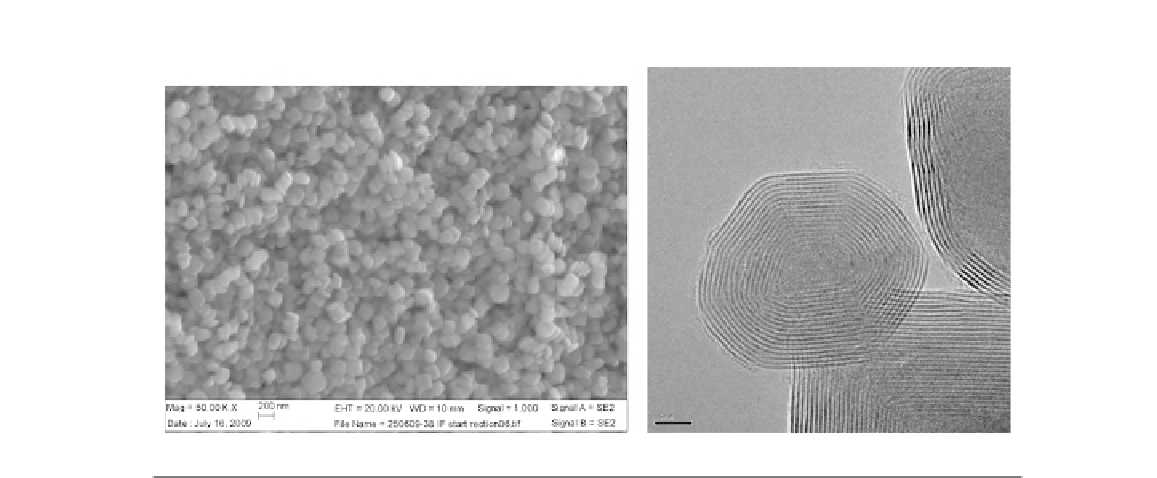Biomedical Engineering Reference
In-Depth Information
(B)
(A)
FIGURE 13.4
(A) SEM micrograph of assortment of IF-MoS
2
nanoparticles (scale bar is 200 nm); (B) TEM micrograph of
one such nanoparticle (scale bar 5 nm). Note the (nested) closed MoS
2
layers.
The synthesis of IF-MoS
2
NP from MoO
3
powder was found to be more complex. The reason
for these difficulties was the high volatility of the oxide powder above 700
C. Following a con-
certed effort to elucidate the growth mechanism of IF-MoS
2
NP
[26]
, a new vertical (FBR-like)
reactor was erected and used
[26]
, which allowed synthesis of about 0.5 g/day of high-quality IF-
MoS
2
NP.
Figure 13.4A and B
shows typical scanning electron microscope (SEM) and transmission
electron microscope (TEM) images of such NP, respectively. The NP assume the form of oblate
structure having many (
20) closed walls and small hollow core. The diameter of such NP spans
.
in the range of 60
150 nm with mean value of about 80 nm. When added to lubricating fluids,
these NP were found to exhibit excellent tribological behavior
[27,28]
.
A more recent accomplishment was the synthesis of rhenium (Re) doped IF/INT NP
[29]
.
Rhenium, being one-column to the right of W (Mo) on the periodic table, has five valence electrons
in its outer shell compared to four for molybdenum or tungsten. Thus, substituting about 100 Re
atoms in the IF-MoS
2
nanoparticle (
10
6
atoms) induces negative surface charge on the nanoparti-
cle surface. Such NP behave quite differently from the undoped NP. For example, the doped NP
disperse well and form stable suspensions in various fluids. They also exhibit enhanced conductiv-
ity and may find electronic applications in the future. Most importantly, adding small amounts of
such NP to lubricating fluids (poly-alpha olephin: type 4, i.e., PAO-4) leads to a precipitous reduc-
tion in the friction and wear
[29,30]
as shown in
Figure 13.5
. These findings make the IF NP and
particularly the doped ones, very suitable for some medical applications, as explained below.
B
13.3.3
Self-lubricating surfaces
The idea of making self-lubricating surfaces, i.e., hard surfaces which do not require any fluid to
lubricate the contact area, is not new and has been pursued by many groups before; see for example

